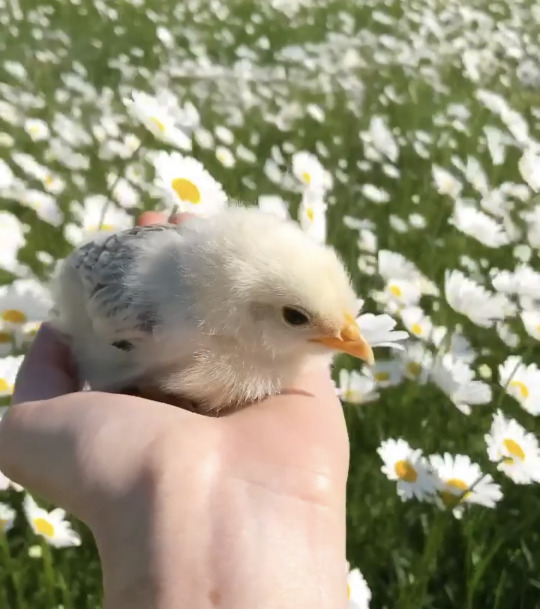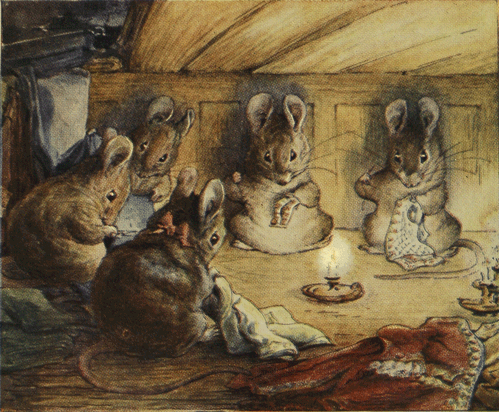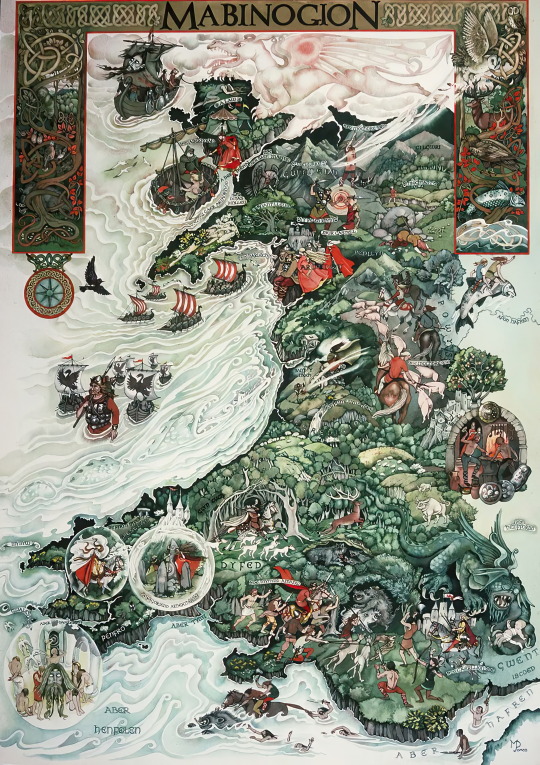irish pagan // lesbian // politics student // tarot // slightly too obsessed with swords
Don't wanna be here? Send us removal request.
Text
Being a witch trying to research with books is just like:
"no"
"that's blatant misinformation"
"this guy was exposed as a nazi"
"no"
"that's historically inaccurate"
"this person was exposed as a terf"
"no"
"oh something I can use-"
#my two main interests being witchcraft and historical martial arts#finding books is a nightmare#but nothing beats the feeling of finally striking gold after coming up with nothing for so long
1K notes
·
View notes
Text
Taking Notes for Witchcraft
You'll see the advice of "write everything down" everywhere, and for good reason. It's a fundamental skill when studying anything, in my opinion. You can be a great reader and know all the right ways to spot a bad source, but none of that matters if you aren't keeping notes. A student is only as good as their note-taking skills, and all witches are students.
But how do you take notes?
Well, first of all, take note of this: I'm not talking about a grimoire. This isn't about writing proven spells in a pretty notebook. This is about writing down everything in a non-judgmental, kind of messy, comprehensive log. It should have a standard layout or template to make it easier to use and look back on, but otherwise, it's a working document for your eyes only.
There are countless ways to keep notes on anything. If the school system failed you (as it did many of us), chances are, you weren't ever taught how to take notes. You were just told to "write that down" and never looked at it again. You're not alone! You, too, can learn how to take not just notes but good notes.
Fundamentals of Note-Taking
The important thing to remember here is that notes are for you. There is no test to pass, no professor to impress, no essay to write. These notes are meant to help you in your magical and/or spiritual practice. But what's the purpose of taking notes, if there's no one and nothing forcing you to take them? In my mind, there are a few:
Absorbing new information by associating a physical movement with the topic (as in, remembering writing something down and using that to recall the information)
Being able to go back and reread information you've already gone over, creating a reference document for future use
Making note of thoughts, opinions, and ideas in the moment so you remember them later
With these basic purposes in mind, you might think to yourself, "Oh, that's easy! Just write everything down. Easy peasy." But to make notes not only effective in the moment for absorption and having the information in one place, they also have to be organized. Writing things down willy-nilly is fine right up until the moment you're spending 20 minutes looking for one specific note buried in a pile of loose, unlabeled papers.
So here are my (very opinion-driven) guidelines for taking notes on anything:
Notes must be kept in a dedicated, bound notebook or dedicated digital file system. Not a binder, not in loose-leaf pages, not on scraps of paper. In a notebook. Spiral notebooks are fine, but I prefer something I can't rip pages out of. I have both a digital system and a notebook system; the notebook is for raw notes and unfiltered thoughts, whereas the digital system is more polished (my actual grimoire).
Notes must be kept in date order. Chronologically! Not by subject. No jumping around the notebook, either. It doesn't matter if one page has a list of recipes to test and the next is detailing an odd dream. If they happen on the same day, they exist together.
All pages must follow a template. I have several templates for various subjects -- one for test recipes, one for completed recipes, one for spells, one for research topics... Some are more rigid than others (recipes in particular). You can use any template or method that you want, so long as it works for you. What matters is that they're all the same every time.
The template must include the date, a title, and the purpose or a summary of what the notes are about. This makes it easier to remember when I did something, what it was, what the contents of the notes are, and why I was taking the notes later on.
Number your pages. A pre-numbered notebook is ideal, but you can always add the numbers yourself.
Notes have to be legible. It just has to be legible to you. If your handwriting sucks (like mine), that's fine so long as you can read it later. But this also means making an effort to use language you'll understand. Don't use fancy script you can't read or big words you don't actually understand.
Write in pen! Controversial, maybe! But you should take notes in pen, never pencil. For one, pen won't smudge and fade like pencil will. For another, writing in pen prevents you from erasing your thoughts in the moment. You shouldn't be afraid of making mistakes or crossing things out. Plus, erasing destroys paper. Just don't do it.
Write in two or even three colors. The third reason to use pen! When I write notes, I usually write my template out in black. Then, I'll fill in the basic information in the same black pen. The "actual notes" are taken using a colored pen (blue, often). As I take notes, I usually have thoughts and ideas outside of the information I'm trying to take down. To make these more clear and easier to find later on, I write them down in a third color (red or another fun color).
Let yourself be a little disorganized and "ridiculous." Look. I know I'm saying to use templates and write neatly. But these notes are for your eyes only. You can write things down that you don't think will be actually useful later. Jot down that this detail made you think of that person. Scribble doodles in the margins. Whatever. If it's not going to impede your note-taking, it doesn't matter. But also, if you start reading a book today and don't come back to it until next week, don't pick up the notes on the prior page. Start a new page. The title should reflect that it's a continuation, but don't skip pages to make room for more notes. Fill in every page as you get to them. This is why we number our pages -- note down where the last set of notes are and then keep moving.
An Example - Book Notes
Let's say I'm reading a book and want to take notes from it. The first thing I want to consider is my goal in taking these notes and what I'm hoping to get from the book. My notes will look very different if I'm trying to review a book's quality versus learning a particular type of magic. For the purposes of this example, we'll say I'm taking general notes to glean as much information as I can from the book.
And let's say I'm using... *casts about looking for the nearest book*... The Bountiful Container, by Rose Marie Nichols McGee and Maggie Stuckey. A book I genuinely do recommend for anyone looking to learn how to keep an edible container garden, by the way.
My ideal template for a book includes:
The date in the upper left-hand corner
The page number in the lower outer corner (for left pages, bottom left; for right pages, bottom right)
The title of the book as the title of the page, followed by the author
The topic of the book
What the book contains (spells, instructions, philosophy, guides, lists, etc.)
My goal in reading it and taking these notes
A heading to delineate where the actual notes begin
Dividing parts or chapters in my chosen note-taking pen color
Here's an example of what that might look like:
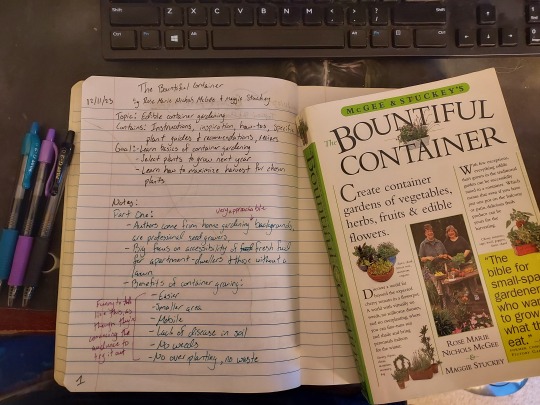
Note how I'm using bullet points to keep my thoughts organized and separated. You can also see the purple writing that denotes my less organized, in the moment thoughts and feelings on what's being said in the book. Here, the black pen is the template, the teal is the facts presented by the book, and purple is my personal commentary.
You don't have to divide your commentary and factual notes, by the way. I do it because I want to easily delineate between what's actually being said by the authors and what I'm thinking in the moment about what's being said. Sometimes, I'll write them as I have in the above example, in the margins or next to the factual stuff. Other times, I'll write them in line as a dedicated bullet point. It all depends on when I have the thought.
Another Example - Spell Notes
"But what about spells?" I hear you hypothetically asking. I'm glad you've hypothetically asked, dear reader! A very similar approach can be applied to writing notes on spells.
For the purposes of this example, I'll actually show off an updated version of the notes for my Pickled Pickle Hex. Note that this isn't my actual notebook or grimoire, since those are for my eyes only.
For spells, my ideal layout includes:
The name of the spell as the title
The date in the upper left corner
The page number as described previously
The source of the spell
Type of spell (hex, protection, edible, jar, candle)
Purpose of the spell
Ideal timing, if applicable
Ingredients
Instructions
Space for notes before, during, and after the spell (during/after notes may be recorded separately)
And here's the visual example:

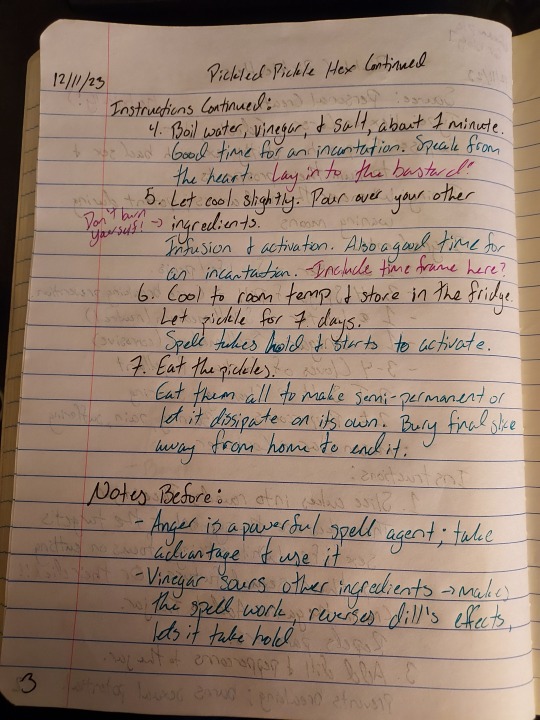
Note again how the template and basic information is all in black. This color is all business, detailing the actual, physical steps taken for the spell. The teal pen describes the magical parts -- ingredient correspondences, magical acts, incantation locations, etc. In the actual version, I include the incantation itself here. Then, the purple pen is my thoughts while recording it. It's mostly me talking to myself, but note under number 5 in the second image where I ask, "Include time frame here?" It's a note to self to consider where to add an expiration or expected end date during the casting process.
Again, you can include whatever you want. My original notes have doodles and copious notes in the margins... plus ingredients I needed to pick up for the spell. You can include whatever notes you need to. If it's relevant in the moment, write it down.
Recording Spell Results
A big part of note-taking for me is writing down how things work and how it all went. After all, why would I want to cast a spell again if I didn't enjoy it and it didn't work?
It's important to keep notes during your casting. I would suggest tracking the following:
Thoughts and feelings you have (nervous, tired, happy, angry, "I'm hungry," "I should've brought water with me," etc.)
Messages you receive from spirits or other entities
Odd things you notice (wax dripping strangely, shapes in the incense smoke, sounds nearby, increased pet activity, tarot cards jumping)
Alterations to prescribed steps, ingredient substitutions, added or removed steps or actions
Questions you have during the casting and answers if you look them up immediately
Concerns that come up regarding efficiency, energy levels, whether you're "doing it right," missing ingredients, and so forth
How the final result turns out (how it looks, how you feel about it, etc.)
What your next steps are (hiding it, burying it, setting it on your altar, eating it, etc.)
During this stage, particularly for that last bullet point, decide when you'll come back to this spell to check how it went. Sometimes, it isn't possible to test your results (hexes on someone you don't see consistently, for example). Even so, you should still return to the spell to record how you feel, what you think with hindsight on your side, and so forth. If you can tell how the spell worked, write down what happened and why you believe it's connected to the magical working.
If you like, you can make additional notes on the spell and steps themselves. What I do is I put a note under the post-casting section that says, "Additional notes written [date] in this pen color." And, true to form, it'll be a different pen color to everything else I've written with so far.
Again, remember that these notes aren't final. They're experiments and study notes, not grimoire pages. These notes are what your grimoire will be based on. Once you feel confident with a spell, write it into your official grimoire using your layout and medium of choice. In my case, this means typing up the final, expanded version of my notes and spells.
Conclusion
Look, in the end, it doesn't matter how you're writing stuff down. All that matters is that you're writing it down. Keeping it organized makes it easier to use later. Do what works for you.
Here are a few suggestions for note-taking methods and applications that have fed into my philosophies:
Bullet journaling - This ended up not really being for me, but a lot of the ideals are really appealing. This is where the templates idea came from.
Lab notebooks - By far the biggest influence. I highly suggest all magical practitioners give the lab notebook method a try, especially for testing spells and recording results.
Writing prompts - No, really. Using writing and spell prompts to build out and test my note templates was critical when I was trying to figure out how best to set things up. It's a low-effort way to bang out a bunch of ideas and refine layouts.
Spell books - Obviously. Take a look at how authors lay out their spells. It's organized, easy to parse, and includes details about the working. That's ideally what your notes should mimic.
Obsidian - This is an application for taking notes. It completely replaced my massive, disorganized folder of Word documents. Link between pages, tag documents for easy sorting, embed content from reference websites, draw brain maps, organize folders, use add-ons to create templates... Obsidian has literally been life changing. I use it for everything, including my grimoire. You have to pay for it, but it's very worth it. A second brain, indeed.
Try different layouts, formats, methods, mediums, everything. Hell, write notes on what works and what doesn't for your note-taking. You gotta start somewhere.
If you like my work, consider throwing a tip in my tip jar! Your support helps me keep making posts like this one. Plus, supporters got access to the full version of this post a full week early! That could be you for as low as $1.
1K notes
·
View notes
Text
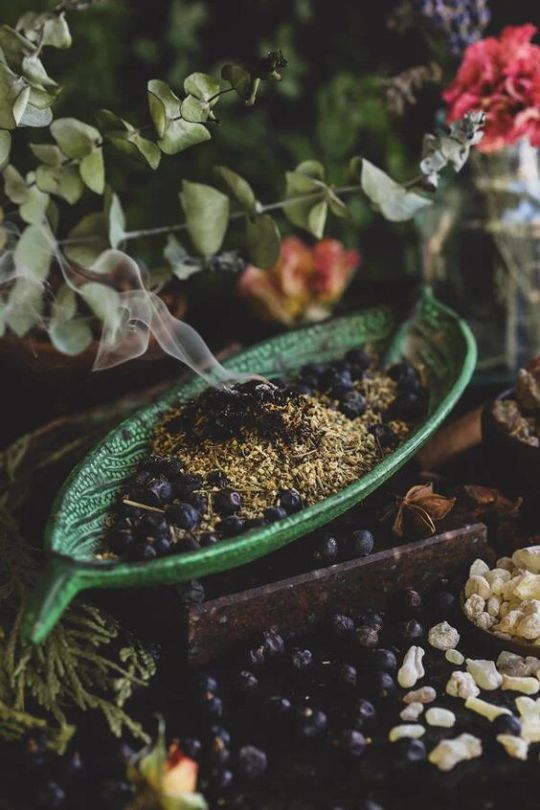
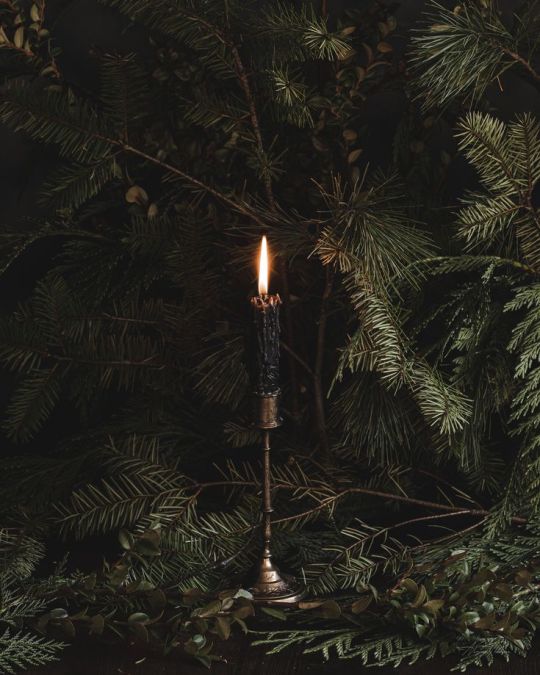
Witchcraft 101:
Cleansing vs Uncrossing vs Banishing

Alright witches. Lets dive into some witchy basics and discuss the differences between cleansing, uncrossing and banishing. This will hopefully help you differentiate between them. But.. lets be honestly if you do something like call a spell an uncrossing when "technically" doing a banishing, who cares its all in good spirit. The reason i think its good to have a difference in mind between these falls into how you handle a spell. If I'm doing an uncrossing vs a banishing i would choose different spell ingredients, maybe work with different gods, or choose a different element to work with.
Cleansing: I consider cleansings as the foundation and most basic of these. Its almost an umbrella term the other two fall under. All banishings are cleansings, but not all cleansings are a banishing. Cleansings are when you're trying clear something away. Most often people will use this term in day to day workings and general upkeep to make sure nothing has stuck to them. This would include more casual things like smoke cleansing, showering and asking the water to cleanse you, sound cleansing, etc. Its not a full spellworking or ritual, but still done with energy and intention. Sometimes you may do a cleansing and realize whatever is there, is stuck deeper then you expected. So you take the next steps and do a more "intense" cleansing like an uncrossing or banishing.
Uncrossing Spells: Uncrossing specifically refers to removing unwanted energy. Usually when discussing what is an uncrossing, I sperate it from just a cleansing by describing it as a very intense cleansing where you're trying to strip away intense and specific energy. These are more work and a step up from an everyday cleansing for more intense scenarios. This is very spirit focused; think of it as taking out the bad and putting in the good. Some types of spells I would consider an uncrossing are: removing hexes/jinx/curses, removing the evil eye, spiritual detoxes, road openers, removing any stubborn energy, removing feelings, etc. I associate uncrossings with water: it's soaking in and getting that energy out. I would choose herbs/spell ingredients that are uplifting and purifying. Think salt, rosemary, rue, and lemons.
Banishing Spells: Banishing spells remove unwanted entities, spirits or people. You can use it to get rid of very deep rooted things like habits or insecurities. Banishings are quite a strong forms of spellwork. You're really kicking something out and away from you when you do a banishing. Its connected to more deep rooted things that you're trying to remove from your life. Some types of spells I could consider a banishing: cord cutting, exorcisms, banishing a spirit attached to you, getting rid of insecurities, freezers, etc. I associate banishings with fire. Burn and gtfo. I would choose herbs that have more of a kick to them and are defensive. Think nettle, blackberry leaves, cloves, even pepper in some cases.
Please note this doesn't have to be something strict. Like i said at the beginning this is just a guide that will help you differentiate so you can tackle the spellwork as effectively as possible.
✨Stay Spooky ✨
2K notes
·
View notes
Text
2024 Witches' Calendar
For all my witches out there, here's a handy list of the 2024 dates for the solstices, quarter days, full and new moons, and special events. I've listed my sources at the bottom.
Dates and times for all events are calculated for Eastern Standard Time, USA, Northern Hemisphere. Adjust for your location as needed and check the DarkSky Placefinder to see what special events will be visible in your area. Enjoy!
Solstices, Harvests, and Quarter Days
February 1-2 - Imbolc / Candlemas
March 19 - Spring Equinox / Ostara
April 30-May 1 - Beltane / May Day
June 20 - Summer Solstice / Midsummer / Litha
August 1 - Lughnasadh / Lammas / Summer Harvest
September 22 - Autumn Equinox / Mabon / Fall Harvest
October 31 - Samhain / Halloween / Final Harvest
December 21 - Winter Solstice / Yule
Full Moons
January 25 - Wolf Moon ♌
February 24 - Snow Moon ♍
March 25 - Worm Moon ♎
April 23 - Pink Moon ♏
May 23 - Flower Moon ♐
June 21 - Strawberry Moon ♑
July 21 - Thunder Moon (aka Buck Moon) ♑
August 19 - Sturgeon Moon* ♒
September 17 - Harvest Moon* ♓
October 17 - Hunter's Moon (aka Blood Moon)* ♈
November 15 - Frost Moon (or Beaver Moon)* ♉
December 15 - Cold Moon (Black Moon) ♊
*- Supermoon
Fun Fact: The title of Harvest Moon is given to either the September or October full moon, whichever falls closest to the autumn equinox. Once again this year, that month will be September.
New Moons
January 11 ♑
February 9 ♒
March 10 ♓
April 8 ♈
May 7 ♉
June 6 ♊
July 5 ♋
August 4 ♌
September 2 ♍
October 2 ♎
November 1 ♏
December 1 ♐
December 30 (black moon) ♑
Special Celestial Events
January 3-4 - Quadrantids meteor shower peak
March 25 - Penumbral Lunar Eclipse
April 8 - Total solar eclipse
April 22-23 - Lyrids meteor shower peak
May 6-7 - Eta Aquarids meteor shower peak
August 11-13 - Perseids meteor shower peak
August 19 - Sturgeon Supermoon / Seasonal Blue Moon
September 17 - Harvest Supermoon / Penumbral Lunar Eclipse
October 2 - "Ring of Fire" solar eclipse
October 17 - Hunter's Supermoon
October 21-22 - Orionids meteor shower peak
November 15 - Frost Supermoon
November 16-17 - Leonids meteor shower peak
December 13-14 - Geminids meteor shower peak
December 30 - Black Moon
(Check the DarkSky Placefinder to see what will be visible in your area!)
Mercury Retrogrades (in case you need them)
April 1 - April 24
August 4 - August 27
November 25 - December 15
Happy Witching!
SOURCES & FURTHER READING:
Bree's Lunar Calendar Series
Bree's Secular Celebrations Series
Moon Info - Full Moon Dates for 2024
Calendar-12 - 2024 Moon Phases
Full Moonology - 2024 Full Moon Calendar
AstroStyle - All the 2024 Full Moons
Your Zodiac Sign - Astrology Calendar 2024
Old Farmer's Almanac - Mercury Retrograde Dates 2023-2024
Lonely Planet - Best Star-gazing Events of 2024
Sea and Sky - Astronomy Calendar of Celestial Events 2024
DarkSky International - Dark Sky Placefinder for Stargazing
Pagan Grimoire - Wheel of the Year: The 8 Festivals in the Wiccan Calendar (2024 Edition)
=
If you're enjoying my content, please feel free to drop a little something in the tip jar or check out my published works on Amazon or in the Willow Wings Witch Shop. 😊
EDIT: Mercury is stationed direct on Jan 1st, 2024. The source I used which stated it was in retrograde until the 18th had a typo.
EDIT: Fixed the zodiac signs for the full moons using a new source.
5K notes
·
View notes
Text
Late 20s friend: Capybaras are made out of friend material
Early 20s me: *nodding in agreement*
Early 20s me: ...
Early 20s me: Are you trying to call them friend shaped?
#this is the generational divide nobody talks about#vote now who said it better#tag your oc or something idk
2 notes
·
View notes
Text
🌟 Types of Divination 🌟
🃏 Tarot Reading: Ah, the classic! Shuffle those cards, lay 'em out, and let the symbols tell your story. It's like a psychic storytime with beautifully illustrated cards.
🔮 Crystal Ball Gazing: Channel your inner fortune teller and gaze into the shimmering depths of a crystal ball. See visions, symbols, or just a really fancy paperweight – your call!
☕ Tea Leaf Reading: Sip your cuppa, but don't toss those leaves! The way they settle in your cup can unveil the mysteries of the universe. Get ready to decipher some leafy hieroglyphics.
🖐️ Palmistry (Chiromancy): Study the lines, mounts, and shapes on your palm. Each crease tells a story about your life path, personality, and potential. It's like reading a roadmap to your destiny right on your hand!
🕊️ Feather Divination: Feathers are more than just fashionable accessories for birds! They can carry messages from the spirit world. Find one, meditate on it, and decode its wisdom.
🌀 Runes Casting: Norse warriors used them, and now you can too! Grab some ancient runestones, cast them, and let the runic symbols weave tales of your destiny.
🕯️ Candle Scrying: Light a candle, focus on the flame, and let your visions come to life within the flickering glow.
🌿 Pendulum Magic: Swing that pendulum and ask it some yes-or-no questions. Allow the pendulum to swing freely and always keep your hand still to allow the energy to truly answer you questions.
🌗 Numerology: Numbers, man! They're everywhere, and they've got a lot to say. Discover your life path, destiny, and soul numbers.
🔍 Scrying Mirrors: Stare into the abyss... or, well, a special mirror! Gaze deep, and let the answers reveal themselves.
🌊 Water Scrying: Gaze into the reflective surface of water – be it a pond, a lake, or even a scrying bowl. Watch as ripples reveal the unseen.
🐚 Shell Divination: Channel your inner mermaid! Listen to the whispers of seashells and let them reveal their secrets. You can also collect a handful of different shells and cast them. Their placement, pattern, etc, can reveal important details!
🗝️ Key Casting (Cleidomancy): Gather a collection of old keys, close your eyes, and toss them onto a cloth. The position and arrangement of the keys will unveil symbolic messages or answers to your questions. It's like unlocking the secrets of the cosmos, one key at a time.
🎶 Music Divination (Alectryomancy): Play some tunes and let the lyrics, melodies, or even random song selections speak to you. The songs that resonate can offer messages or insights about your current situation. Let the music be your mystical DJ!
With this ever-growing list of divination methods, you'll have a magical tool for every occasion. Trust your intuition and let your inner seeker explore the mystical world of divination. Happy divining, cosmic explorers! 🔮🌠
3K notes
·
View notes
Text
cemeteries aren't creepy they're actually devoted to memory and rest and love and humanity
116K notes
·
View notes
Text
Instead of being a person i’d like to be a big tall tree or a weeping willow or a cat or a star
112 notes
·
View notes
Text
Important Facts about Samhain from an Irish Celtic Reconstructionist
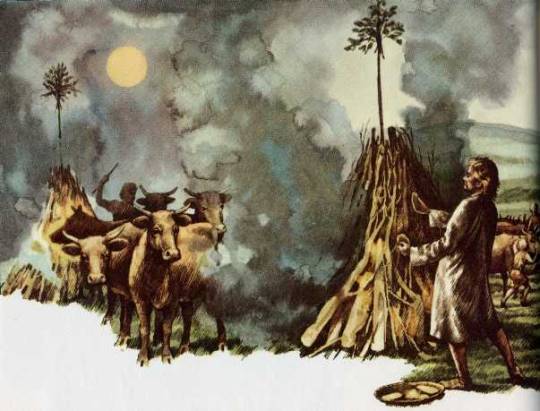
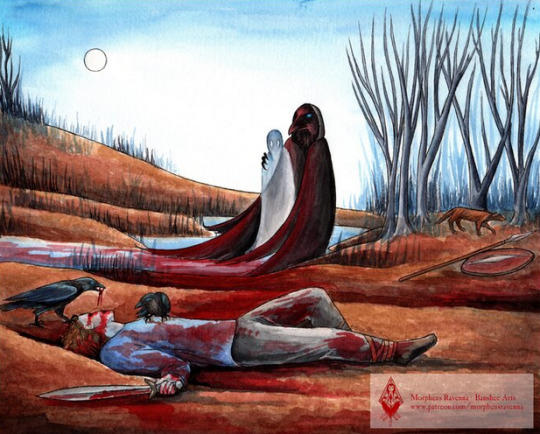

Pronunciation
SOW-in or SOW-een ~NOT~ Sam-han, Sam-win etc.
Dates
Most reconstructionists celebrate Samhain on Oct 31-Nov 1, however some may choose to celebrate on Gregorian Nov 13-14 as this would match the Julian dates of Oct 31-Nov 1. Some also believe that it was a three day festival spanning Oct 31- Nov 2 on which Nov 2 is specifically devoted to ancestral veneration, but there is no specific evidence of this, only possible extrapolation from more modern practices.
Following the Celtic method of days beginning at sunset, regardless of the specific dates you choose to celebrate on your festivities should begin at sunset and end at sunset.
Importance in the Mythos
Ná Morrighan has a strong connection to this time of year thanks to the story of Cath Dédenach Maige Tuired (The Last Battle of Mag Tuired) in which she is found depicted as the ‘Washing Woman’ (sometimes washing herself in the river and other times washing the bloodied armor of the soldiers that would die that day), on the eve of the battle which is also Samhain. The Dagda approaches her and couples with her (creating the ‘Bed of the Couples’ along the bank of river and granting Dagda her blessing in the battle to come). This encounter seems to over emphasize the liminality of the encounter by taking place during the changing of the year and with the couple each standing with ‘one foot on either bank’ of the river.
She and her sisters (Badb and Macha) then use various forms of magic to rain destruction on their enemies (in the form of fire and blood). After the day is won Morrighan speaks a prophecy that describes what is taken by some to be the end of days and others to be the events which will later lead to the Ulster Cycle.
Beneath the peaceful heavens lies the land. It rests beneath the bowl of the bright sky. The land lies, itself a dish, a cup of honeyed strength, there, for the taking, offering strength to each There it lies, the splendour of the land. The land is like a mead worth the brewing, worth the drinking. It stores for us the gifts of summer even in winter. It protects and armours us, a spear upon a shield Here we can make for ourselves strong places, the fist holding the shield Here we can build safe places, our spear-bristling enclosures. This is where we will turn the earth. This is where we will stay. And here will our children live to the third of three generations Here there will be a forest point of field fences The horn counting of many cows And the encircling of many fields There will be sheltering trees So fodderful of beech mast that the trees themselves will be weary with the weight. In this land will come abundance bringing: Wealth for our children Every boy a warrior, Every watch dog, warrior-fierce The wood of every tree, spear-worthy The fire from every stone a molten spear-stream Every stone a firm foundation Every field full of cows Every cow calf-fertile Our land shall be rich with banks in birdsong Grey deer before Spring And fruitful Autumns The plain shall be thronged from the hills to the shore. Full and fertile. And as time runs its sharp and shadowy journey, this shall be true. This shall be the story of the land and its people We shall have peace beneath the heavens. Forever
(based on the translation by Isolde Carmody)
It is also mentioned in Echtra Cormaic that on this festival every seven years the high king would host a feast, it was at this time new laws could be enacted. (but it seems that individual Tuathas or possibly kings of the individual providence may have done this for their territories at Lughnasadh).
It seems to be a time considered especially susceptible to (or of) great change as it is the time which the Tuatha de Danann win victory over the Formorians and take control of Ireland, the invasion of Ulster takes place at this time in Táin bo Cúailnge, in Aislinge Óengusa Óengus and his bride-to-be are changed from bird to human and eventually he claims kingship of Brú na Bóinne at this time of year.
Celebration Traditions
Samhain is the beginning of the “dark half” of the year and is widely regarded as the Insular Celtic equivalent of the New Year. The “dark half” of the year was a time for story telling, in fact in this half of the year after dark is considered the only acceptable time to tell stories from the mythological and Ulster cycle (the Fenian cycle being assumed to be no older than the 12th century based on linguistic dating). Traditionally anything that had not been harvested or gathered by the time of this festival was to be left, as it now belonged to the Fae (in some areas specifically the Púca).
This was also an important time for warding off ill luck in the coming year. Large bonfires would be built and as the cattle were driven back into the community from the pastures they would be walked between these bonfires as a method of purification (the reverse custom of Bealtaine where the livestock were walked between the fires on their way out to the summer pastures). Assumed ritualistic slaughter of some of the herd would follow (though this perhaps had the more practical purpose of thinning the herd before the winter and creating enough food for the feasting). In some areas the ashes from these fires would be worn, thrown or spread as a further way to ward off evil.
Homes would be ritualistically protected from the Aos Sí (Fae or ‘Spirits’) through methods such as offerings of food (generally leaving some of the feasting outside for them), carving turnips with scary faces to warn them off (we now tend to do this with gourds), and smoke cleansing the home (in Scottish saining) traditionally with juniper, but perhaps rowan or birch might be an acceptable alternative. It is likely these would be part of the components used in Samhain bonfires as well, for the same reason.
Lastly based on later traditions as well as links in the mythology this is a time where divination practices or those with the ‘second sight’ were regarded to be especially potent.
Art Credit @morpheus-ravenna
648 notes
·
View notes
Text
In case anyone is wondering....
"When does the full moon next coincide with...."
Candlemas / Imbolc - February 2026
Leap Day - February 2048
Vernal Equinox - March 2038
Beltane / Mayday - May 2025
Summer Solstice - June 2062
Lughnasadh / Lammas - August 2042
Autumnal Equinox - September 2029
Halloween / Samhain - October 2039
Winter Solstice - December 2094
"When is the next blue moon?"
August 19, 2024 (seasonal)
May 31, 2026 (calendar)
May 20, 2027 (seasonal)
December 31, 2028 (calendar) - plus total lunar eclipse
August 24, 2029 (seasonal)
August 21, 2032 (seasonal)
May 22, 2035 (seasonal)
January 31, 2037 (calendar) - plus total lunar eclipse
(Phases calculated for Northern Hemisphere and are subject to slight changes by time zone. Southern Hemisphere dates may vary.)
[Sources: The Old Farmer's Almanac, Everyday Calculation, Wikipedia, Forbes.]
1K notes
·
View notes

